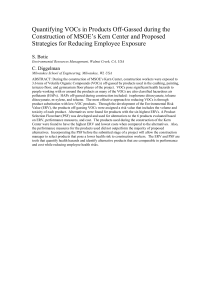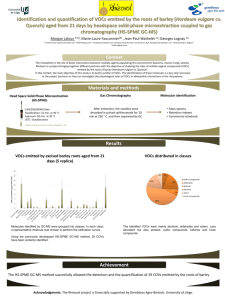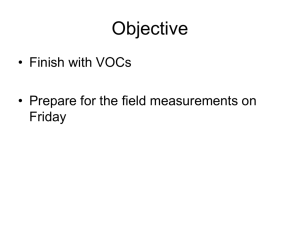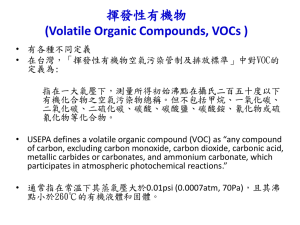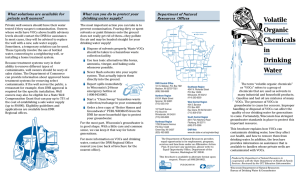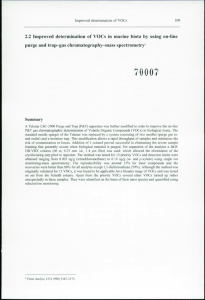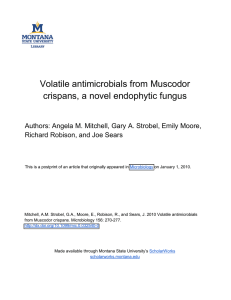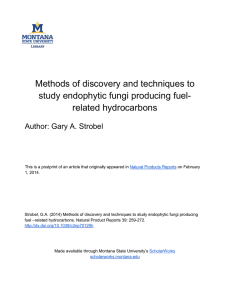T., J. H. Volatile organic compounds as priority pollutants in the North Sea
advertisement
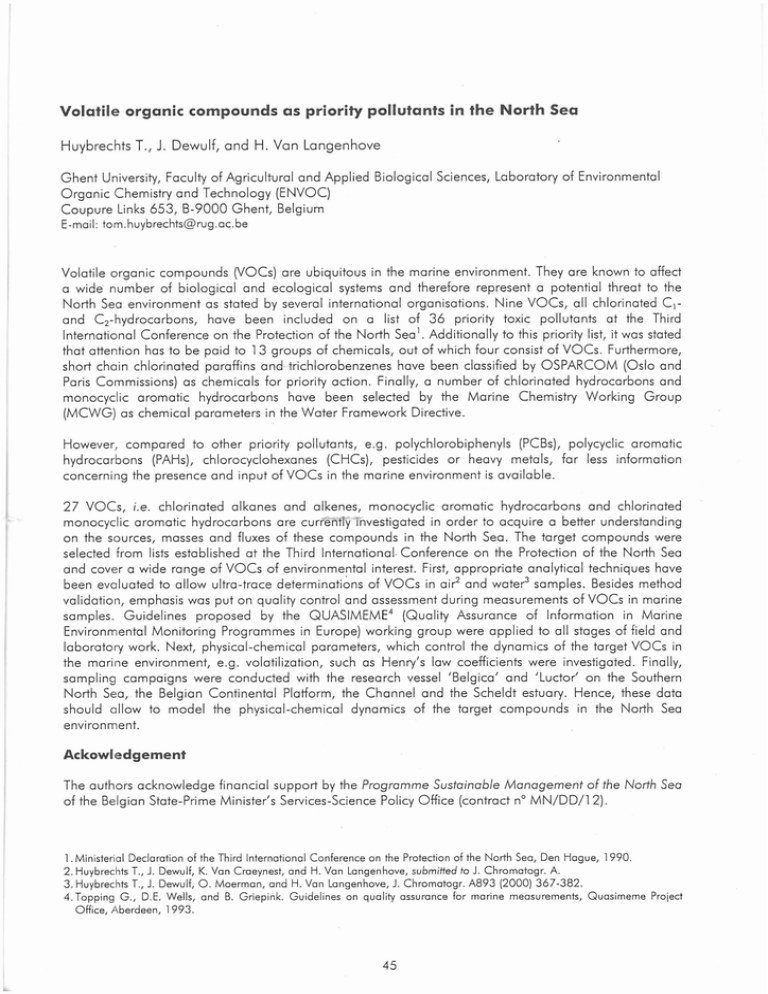
Volatile organic compounds as priority pollutants in the North Sea Huybrechts T., J. Dewulf, a n d H. Van Langenhove Ghent University, Faculty of Agricultural and Applied Biological Sciences, Laboratory of Environmental Organic Chemistry and Technology (ENVOC) Coupure Links 653, 8-9000 Ghent, Belgium E-mail: tom.huybrechts@rug.ac.be Volatile organic compounds (VOCs) are ubiquitous in the marine environment. They are known to affect a wide number of biological and ecological systems and therefore represent a potential threat to the North Sea environment as stated by several international organisations. Nine VOCs, all chlorinated C,and C2-hydrocarbons, have been included on a list of 3 6 priority toxic pollutants at the Third lnternational Conference on the Protection of the North Sea'. Additionally to this priority list, it was stated that attention has to be paid to 1 3 groups of chemicals, out of which four consist of VOCs. Furthermore, short chain chlorinated paraffins and trichlorobenzenes have been classified by OSPARCOM (Oslo and Paris Commissions) as chemicals for priority action. Finally, a number of chlorinated hydrocarbons and monocyclic aromatic hydrocarbons have been selected by the Marine Chemistry Working Group (MCWG) as chemical parameters in the Water Framework Directive. However, compared to other priority pollutants, e.g. polychlorobiphenyls (PCBs), polycyclic aromatic hydrocarbons (PAHs), chlorocyclohexanes (CHCs), pesticides or heavy metals, far less information concerning the presence and input of VOCs in the marine environment is available. 27 VOCs, i.e. chlorinated alkanes and alkenes, monocyclic aromatic hydrocarbons and chlorinated monocyclic aromatic hydrocarbons are curr"enftyinvestigated in order to acquire a better understanding on the sources, masses and fluxes of these compounds in the North Sea. The target compounds were selected from lists established at the Third lnternational Conference on the Protection of the North Sea and cover a wide range of VOCs of environmental interest. First, appropriate analytical techniques have been evaluated to allow ultra-trace determinatidns of VOCs in ai? and water3 samples. Besides method validation, emphasis was put on quality control and assessment during measurements of VOCs in marine samples. Guidelines proposed by the QUASIMEME4 (Quality Assurance of Information in Marine Environmental Monitoring Programmes in Europe) working group were applied to all stages of field and laboratory work. Next, physical-chemical parameters, which control the dynamics of the target VOCs in the marine environment, e.g. volatilization, such as Henry's law coefficients were investigated. Finally, sampling campaigns were conducted with the research vessel 'Belgica' and 'Luctor' on the Southern North Sea, the Belgian Continental Platform, the Channel and the Scheldt estuary. Hence, these data should allow to model the physical-chemical dynamics of the target compounds in the North Sea environment. Ackowledgement The authors acknowledge financial support by the Programme Sustainable Management of the North Sea of the Belgian State-Prime Minister's Services-Science Policy Office (contract no MN/DD/12). 1 . Ministerial Declaration of the Third lnternational Conference on the Protection of the North Sea, Den Hague, 1990. 2. HuybrechtsT., J . Dewulf, K. Van Craeynest, and H. Van Langenhove, submitted to J. Chrornatogr. A. 3. HuybrechtsT., J. Dewulf, 0 . Moerrnan, and H. Van Longenhove, J. Chromatogr. A893 (2000) 367-382. 4.Topping G., D.E. Wells, and B. Griepink. Guidelines on quality assurance for marine measurements, Quasirnerne Proiect Office, Aberdeen, 1993.
